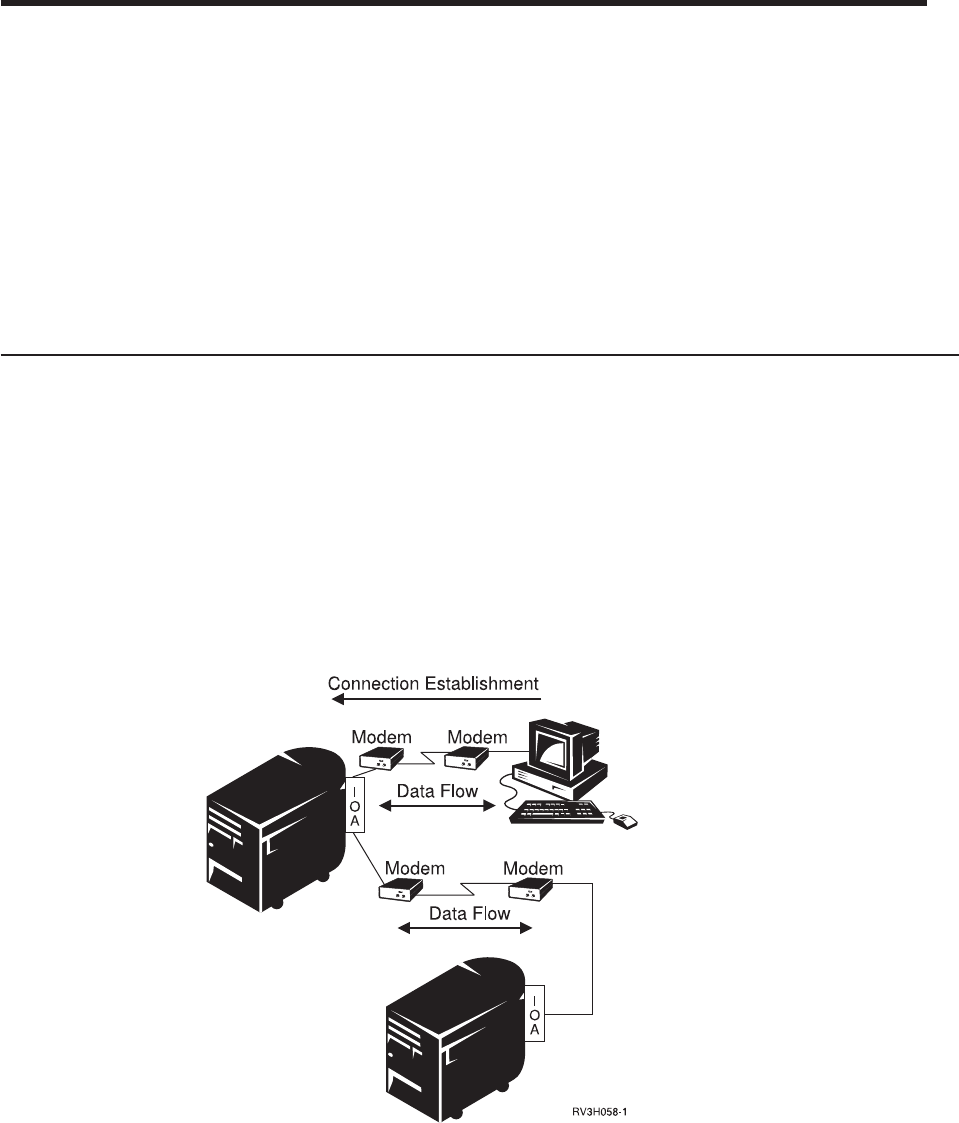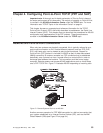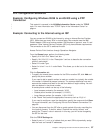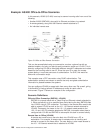
Chapter 4. Configuring Point-to-Point TCP/IP (PPP and SLIP)
Important note: A thorough and in-depth explanation of Point-to-Point is beyond
the scope and purpose of this document. The majority of material on Point-to-Point
is covered in the AS/400e Information Center under the TCP/IP topic. For more
information see “TCP/IP Topics in the Information Center” on page xv.
This chapter focuses on conceptual and reference information for the TCP/IP
Point-to-Point Protocol (PPP) and briefly describes its predecessor, the Serial Line
Internet Protocol (SLIP). This chapter does not document the procedures for AS/400
configuration and implementation of the PPP protocol. Those procedures are
covered in the AS/400e Information Center under the TCP/IP topic.
Networks and Point-to-Point Connections
When only two systems are physically connected, this is typically referred to as a
point-to-point connection or link. Several different protocols, such as PPP, SLIP,
X.25, and frame relay, can be viewed as point-to-point protocols. Support for
Point-to-Point (PPP) protocol is included in AS/400 as part of wide area network
(WAN) connectivity. A common example is a PPP connection that is established
periodically over a phone line from a remote office to a central office in order to
exchange data between the locations. This connection could be from a laptop
computer. Remote systems can access AS/400 applications such as Lotus Notes
over a PPP TCP/IP link. Figure 71 illustrates AS/400 responding to incoming calls.
Another common example of a PPP WAN connection is a dial-out connection that
your system establishes to an Internet Service Provider (ISP), such as the IBM
Global Network (IGN) (see Figure 72 on page 94.)
Figure 71. Remote Systems Dial-in to an AS/400
© Copyright IBM Corp. 1997, 1999 93
|
|
|
|
|
|
|
|
|


















